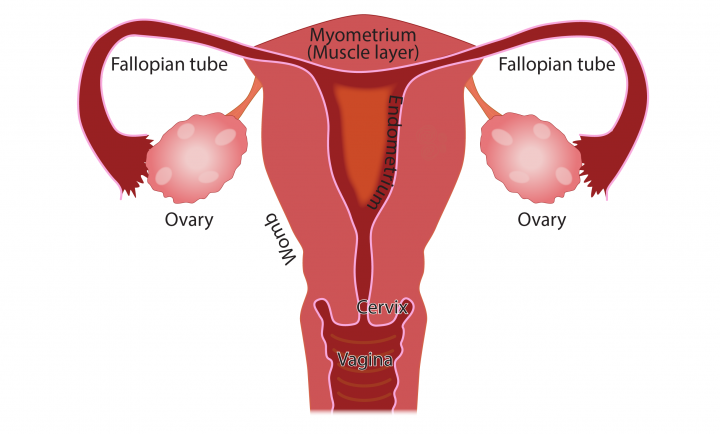What is menstruation?
Menstruation occurs when the lining of the womb (the endometrium) is shed.
- Video: Typical and problem periods
- This animation is part of a collaboration between Cloud Chamber Studios and researchers at the Centre for Reproductive Health, University of Edinburgh, UK. Visit the HOPE website to find out more about periods and period research: https://www.ed.ac.uk/centre-reproductive-health/hope This video is narrated by Dr Jackie Maybin, a researcher and gynaecologist. A transcript of the video narration is available at https://www.ed.ac.uk/centre-reproductive-health/news/2021-news/menstrual-health-animation
Subtitles are available in Polish, Urdu, Spanish, Romanian and Mandarin (via link in video). A version without background music can be found here. A full text script can be accessed here.
The endometrium breaks down and forms a bloody substance that passes through the cervix (neck of the womb) into the vagina. This process usually lasts four to eight days. It is triggered by a sharp fall in the production of hormones from the ovaries, especially progesterone. This decrease in hormone levels results in an inflammatory reaction within the womb lining that leads to shedding. The endometrium looks very much like a wound at this time but repairs completely and the bleeding stops. The shedding and regrowth of the endometrium is called the menstrual cycle.

Why is menstruation necessary?
The lining of the womb is where a pregnancy will be supported and grow if fertilisation of an egg by a sperm takes place. It is necessary for the endometrium to thicken to allow the fertilised egg to implant. If this does not take place, the womb lining will shed to allow growth of new endometrium for the next menstrual cycle. Menstruation is necessary to prevent build-up of the endometrium. However, the endometrium will not build up if a woman is using hormonal contraceptives (e.g. the pill or a contraceptive implant), is pregnant or exclusively breastfeeding. In these instances, it can be normal to not menstruate.
Very few other species menstruate. In fact, it is limited to women, old world primates, the elephant shrew, the fruit bat and one specific type of mouse. All other animals reabsorb their endometrium if pregnancy does not occur. We do not fully understand why some species have to menstruate.
Further information
https://www.nhs.uk/conditions/periods/
https://www.menstrual-matters.com/

